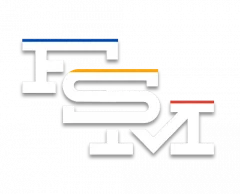
Homebrew – the missing package manager for macOS. Probably the most popular package manager for macOS, Homebrew provides an easy way to install UNIX tools and binary apps.
For the average user Homebrew will definitely make life easier when installing binary apps. For example…
Let’s say you want to install Firefox. Normally you will do a Google ( or DuckDuckGo ) search for Firefox, click on the Mozilla link, click the download button, wait for the .dmg to download, open the dmg, and drag the app to /Applications folder.
With Homebrew you can install Firefox just by typing a short command in Terminal ( e.g. brew cask install firefox ). That’s it.
Jump over the break to learn how to install and start using Homebrew…
ALSO READ
- Chocolatey: The Missing Package Manager for Windows
- HOW TO: Install Homebrew on M1 Macs Running macOS Monterey
How to Install Homebrew
1. Open Terminal
2. Type in and hit enter:
/bin/bash -c "$(curl -fsSL https://raw.githubusercontent.com/Homebrew/install/HEAD/install.sh)"
3. Homebrew will display everything that will be installed and created. Review the list if you wish and hit enter

4. Enter your password and hit enter

5. Homebrew will begin installation. Be patient it takes a few minutes.

6. That’s it. You’re done.

7. But before we go any further, let’s turn off Homebrew analytics. According to Homebrew’s Anonymous Aggregate User Behaviour Analytics, Homebrew gathers anonymous aggregate user behaviour analytics and reporting these to Google Analytics.
To opt out of Homebrew’s analytics, run brew analytics off

HOW TO UNINSTALL HOMEBREW
1. Open Terminal
2. 1. Open Terminal
2. Type in and hit enter:
/usr/bin/ruby -e "$(curl -fsSL https://raw.githubusercontent.com/Homebrew/install/master/uninstall)"

3. Type Y and hit enter

HOW TO INSTALL PACKAGES
1. Open Terminal
2. Type:
brew install package_name
NOTE: replace package_name with the name of the package you wish to install ( e.g. MySql )
HOW TO UNINSTALL PACKAGES
1. Open Terminal
2. Type:
brew uninstall package_name
NOTE: replace package_name with the name of the package you wish to install ( e.g. MySql )
HOW TO BROWSE INSTALLABLE PACKAGES
So how do you know what can be installed via Homebrew? You can search for packages in two ways. From the Terminal, or go to Homebrew’s package listing page.
1. Open Terminal
2. Type and hit enter brew search


OR…
3. Do a search on Homebrew’s package listing page

Install Cask
Most people will probably won’t take full advantage of having just Homebrew installed on their Macs. That’s because the vast majority of default packages are not targeted to the average users. So, we’ll need to install Cask – a Homebrew repository that will allow you to install macOS apps.
1. Open Terminal
2. Type in and hit enter
brew install cask

3. Wait for Cask to be installed


Search for Cask Packages
To know what’s available to install via Hombrew Cask, simply go to this page and search for your desired macOS app. Once you found your package, just copy paste the installation command in Terminal.

Using Homebrew Cask you can easily install a bunch of apps from Firefox to Libreoffice to Steam.
Uninstall Cask Packages
1. Open Terminal
2. Type:
brew uninstall --cask package_name
NOTE: replace package_name with the name of the package you wish to install ( e.g. vlc )
Cakebrew

Ok, so the Terminal is too geeky for you and you are overwhelmed by all the commands you need to type ( and we didn’t even go over other commands like the ones to check for Homebrew errors and to update Homebrew ).
You might prefer doing everything in a nice GUI interface. Well there’s good news and there’s bad news.
The good news is that you can install Cakebrew. The bad news is that Cakebrew won’t allow you to install/remove Cask packages.
But you can easily check out the installed packages and repositories, update Homebrew and check/fix errors, install and remove packages.
How to Install Cakebrew
1. Open Terminal
2. Type in and hit enter:
brew install --cask cakebrew
Once installed you’ll find Cakebrew in your /Applications folder

For more info on how to use Homebrew check out this page.

